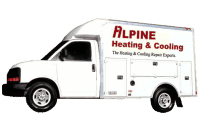Today, more than ever before homeowners are concerned with the overall air quality in their homes. That said here are a few simple and easy ways to keep the air in your home is clean as possible. While everyone knows that it is important to change air filters regularly, here are some other ways of keeping your home clean that sometimes go overlooked. For example, adding a humidifier or dehumidifier to your home can actually help to stop the growth of mold and mildew.
Ensure That Mold and Mildew Do Not Grow Over Time
In many cases these systems can work in tandem with a regular HVAC system. Keeping the humidity level in your home below around 55% will help to ensure that mold and mildew do not grow over time. In homes where the air quality is poor and when there is mold and mildew growth, occupants can end up having dry skin, sore throats, allergies, itchy eyes and even bloody noses. Also important to note is that fungus can grow in damp environments such as in a basement or bathroom.
These Are Natural Filtration Systems
Checking for plumbing leaks is another great way to make sure that undesirable microscopic growth is not occurring someplace in your home. Another uncommon solution for keeping the air in your home as clean as possible is to add a generous amount of houseplants throughout the interior of your house. These are natural filtration systems that do wonders for indoor air quality. They remove toxins from the air and provide much-needed oxygen. This is one of the least expensive ways to improve the overall quality of air in your home. Contact Alpine Heating & Cooling today to learn more about HVAC system maintenance and care located in Burlington, WA and serving all of Skagit County.
Summer is a wonderful time of year especially for those who enjoy the great outdoors. That said coming home to a cool and comfortable home sometimes requires a little bit of proper maintenance, care and management when it comes to a residential HVAC system. Here are a few simple ways to maximize the efficiency of your HVAC system. For example, it is best to make sure that your HVAC system is balanced. Balancing a system of this nature simply involves making adjustments with regard to what are known as volume control dampers as well as registers.
Only Requires Moving a Lever
While not all systems have these components, the ones that do would be best served by having a quick inspection and balancing performed. Registers are perhaps the easiest to deal with and only require moving a lever to make an adjustment. Registers simply control how much conditioned air is allowed to enter a particular room or space within your home. As a note, registers that are positioned the farthest from the main HVAC system should always be kept full open.
Call An Expert To Adjust Registers
Conversely, those that are located close to the central system can be adjusted to be partially closed or completely closed as necessary. While homeowners can do this on their own, it is sometimes best to call upon an expert to adjust registers. This is simply due to the fact that professional technicians will have unique and special instruments that can measure airflow and temperature more accurately. The end result is energy savings and lower utility bills.
Replace Any Items That Have Proven To Be Defective
In addition, most experts recommend establishing a preventative maintenance program for your valued HVAC system. This includes routine changing of air filters as well as inspections at least annually or bi-annually. Having the heat exchanger surfaces cleaned as well as refrigerant coils, condensers and evaporators checked will ultimately be worth it over the short and long-term. Leaks should be repaired and coils, ducts and piping as well as fitting should all be inspected regularly. Always replace any items that have proven to be defective. Contact Alpine Heating & Cooling today to learn more about HVAC system care and maintenance in the Skagit Valley including Anacortes WA, Mount Vernon, Burlington and La Conner.


